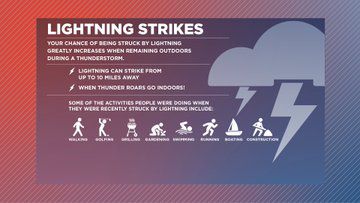It’s Severe Weather Awareness Week across the state of Florida, and each day, Spectrum News will break down a different hazard you could face this year.
On Monday, we’ll the focus on lightning and how you can stay safe during afternoon and evening storms during the spring and summer.
Floridians are no stranger to lightning strikes. During the summer, strikes across the Sunshine state can eclipse 1,000 bolts in just a span of 15 minutes. But how does lightning form and why is it so prevalent across the state compared to other parts of the nation?
How lightning forms
To understand how lightning forms, you first have to go up into the atmosphere, thousands of feet above our head.
As you ascend 30,000 to 40,000 feet up into the sky, the temperature drops well below freezing. As the temperature falls, water vapor in the surrounding clouds begins to transition from a gas to a solid, creating ice crystals in the cloud.
This process is called deposition.
As the ice crystals continue to form in the cloud, they begin to accumulate on water droplets that drop below freezing, known as a super-cooled water droplet. That’s just a fancy term for any liquid droplet that remains in a liquid state under 32 degrees.
These supercooled droplets eventually reach a key stage in their growth where the ice crystals and the liquid droplets want to separate. The ice crystals move toward the top of the cloud, carrying a positive electric charge with them.
Meanwhile, the water droplets and any hailstones that develop head toward the bottom of the cloud, obtaining a negative charge.
Eventually, there comes a time when the negative charges within the base of the cloud become too great to stay put. As a result, these negative charges rush to meet the positive charges in order to dispel energy. This can happen in one of two ways.
The first is when negative charges surge upward, connecting with the positive charges toward the top of the cloud. If this happens, lightning strikes within the cloud- something meteorologists call cloud-to-cloud lightning. These strikes never reach the ground and remain in the sky between the clouds.
In the second scenario, the negative charges surge downward to meet positive charges racing up from the ground. If a connection is made between the ground and the base of the cloud, a lightning flash occurs. This is called cloud-to-ground lightning, or CG lightning.
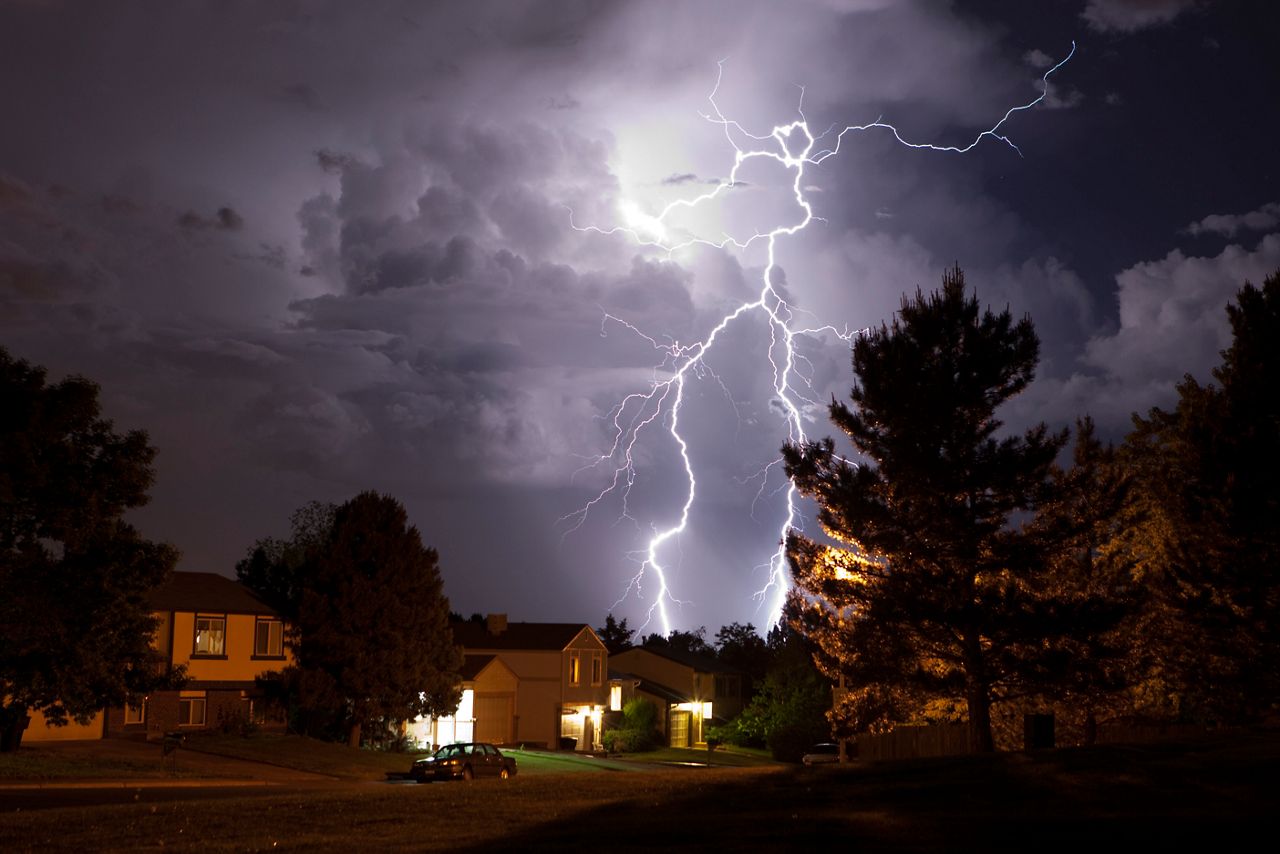
(Getty Images)
Lightning is hotter than anything we have on Earth and is even hotter than the surface of the sun. That excessive heat causes the air to expand rapidly and violently when a lightning flash is created, resulting in what we hear as thunder.
Surrounded by water on three sides of the state, Florida’s unique environment helps to keep us supplied with plenty of water vapor throughout much of the year- a key ingredient in lightning strikes.
This is one of the major reasons Florida has more lightning strikes than anywhere else. The abundance of water vapor, and the occasional cool air aloft from passing storms, help to create excessive lightning strikes across the state.
How to avoid becoming a statistic
While it’s still uncommon to be struck by lighting, your odds greatly depend on where you live.
Florida and Texas are two of the nation’s most deadly states when it comes to lightning fatalities because of the unique environment they share. Both receive ample moisture from the Atlantic Ocean and/or Gulf of Mexico, increasing their odds for more strikes.
Other places like North Dakota or Wisconsin, average less strikes per square mile due to the lack of consistent ingredients for lightning. Instead, their lightning strikes are more common with well-developed storms systems that must carry that suitable environment with it.
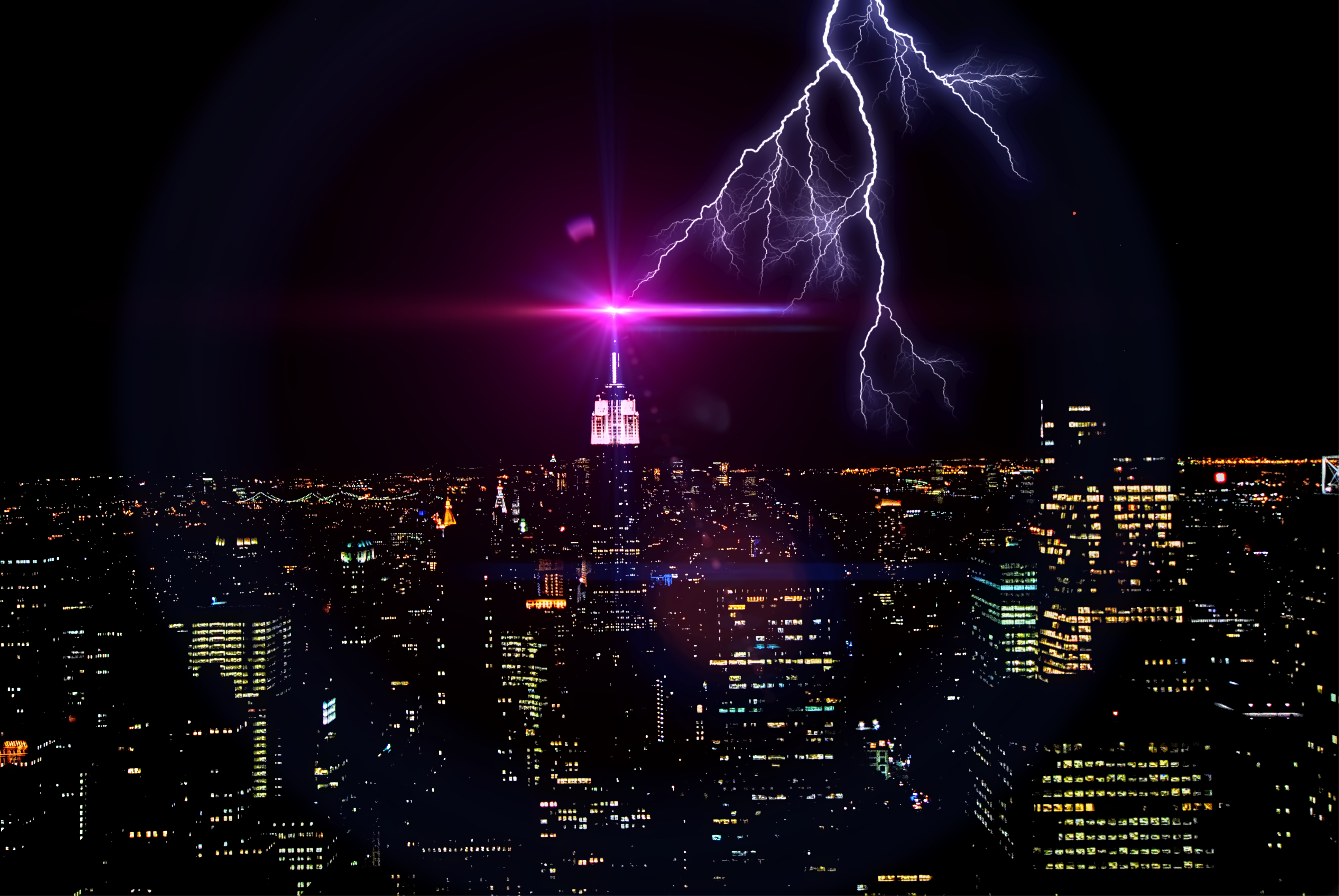
(Getty Images)
If you follow basic safety procedures and head indoors when lightning strikes, your odds of being struck are reduced to near zero. But if you remain outside or perform unsafe activities during lightning storm nearby, your odds of being struck increase significantly.
Let’s put this into perspective.
In 2020, the U.S. population was estimated to be roughly 331 million. While the number of average deaths attributed to lightning during any given year is only 25, the number of injuries per year rises to only 225.
That means your odds of being struck by lightning any given year is 1 in 1.3 million. Those odds decrease to 1 in 16,550 when we look at being struck at anytime in your lifetime.
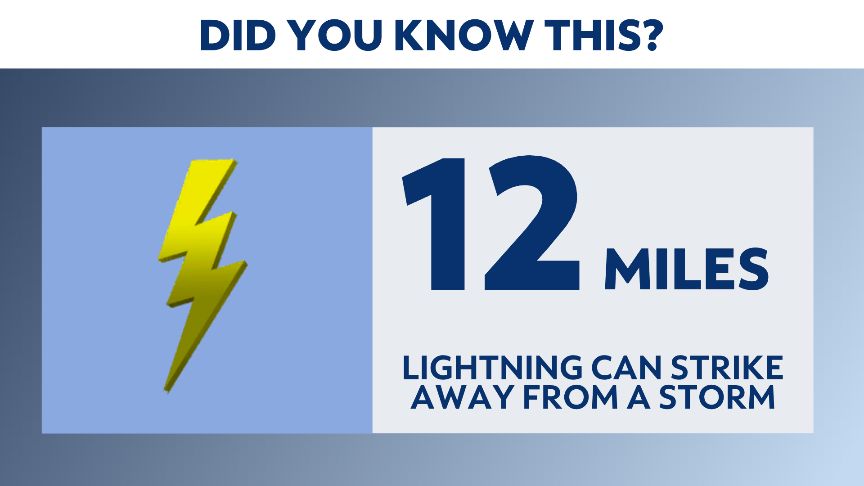
So what should you do if lightning strikes near your location?
Well, you want to seek shelter inside a sturdy structure immediately. Try to avoid structures without walls, like outdoor patios or picnic areas. While these structures provide some protection, the lack of walls still keeps you at a risk of being struck by a certain kind of lightning, like side flashes or ground current strikes.
If you are unable to head into a sturdy, enclosed structure like a well-constructed home, follow these tips:
- Get away from large open fields. Avoid the crests of hills and ridges.
- Avoid standing near large objects like trees, power poles or towers.
- Stay out of the water.
- If located around trees, get as low to the ground as possible by crouching.
- If camping, look to stay in valleys and other low-lying areas.
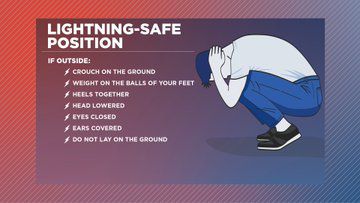
If you’re inside a sturdy building, follow these tips to keep you safe:
- Avoid taking showers. If a house is struck, internal piping is the first line of conduction.
- Avoid windows and doors. These can also become conductors if a house is struck.
- Do not lay on concrete walls or floors.
- Do not use any electric equipment except for remote controls.
- Stay off corded devices like telephones or computers connected by ethernet cords.
Since 2011, Florida continues to lead the nation, with 61 deaths statewide due to lighting. The state averages the most strikes per year, which correlates to why that number is so high.
On top of that, Florida sees more lighting per square mile than anywhere else in the nation. Hence, this is why your Weather Experts say “When thunder roars, go indoors!”
Remember, lightning can strike as far out as 30 miles from the nearest storm, with the most strikes occurring within a 12-mile radius. Just because it isn’t raining overhead doesn’t mean you’re not at risk. Always head indoors once thunder is heard.
On Tuesday, your Weather Experts will talk about the dangers of Florida’s coast, including rip currents and marine hazards.
Our team of meteorologists dives deep into the science of weather and breaks down timely weather data and information. To view more weather and climate stories, check out our weather blogs section.

